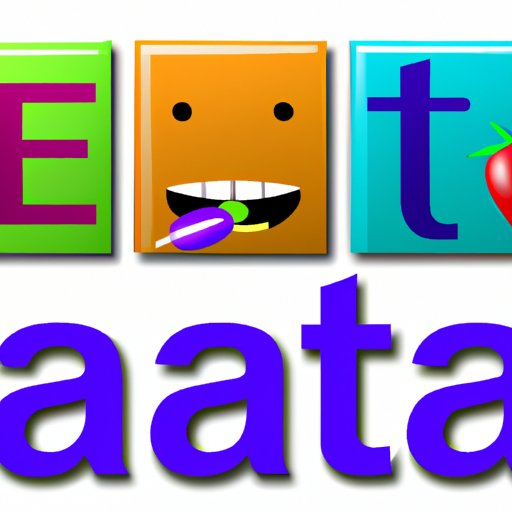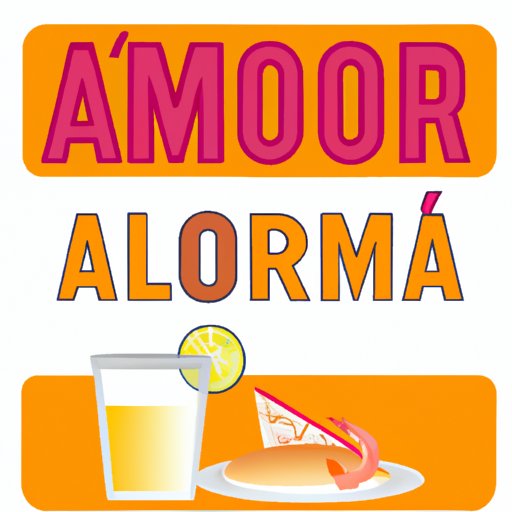
Introduction
Learning Spanish is a valuable skill that can open up new opportunities for communication and cultural exchange. One of the most important elements of any language is vocabulary, and when it comes to Spanish, knowing how to say “eat” is essential for daily life. From ordering food at a restaurant to describing your meals to others, understanding the many ways to say “eat” in Spanish can greatly enhance your ability to communicate effectively. In this article, we’ll cover the most common words for “eat” in Spanish, essential grammar rules for using them, and tips for improving your pronunciation and conjugation.
7 Common Ways to Say “Eat” in Spanish
Spanish, like English, has multiple words that can be used to describe different types of meals or eating habits. Here are some of the most common ways to say “eat” in Spanish:
- Comer: This is the most general and commonly used word for “eat” in Spanish. It can be used for all meals and is especially useful when describing everyday eating habits.
- Cenar: This verb specifically refers to having dinner, making it ideal for evening meals that are not lunch.
- Almorzar: Meaning “to have lunch” is used when referring to eating during lunchtime.
- Desayunar: This verb refers to eating breakfast and is used to describe the first meal of the day.
- Merendar: This word refers to snacking, often with sweet or savory treats. It is commonly used as an afternoon snack between lunch and dinner.
- Tomar: This verb means “to have” and can be used in combination with a food or drink to describe consumption. For example, “Tomar un café” means “to have a coffee.”
- Picar: This verb means “to nibble” or “to snack,” and is often used to describe eating small amounts of food in-between meals or as a precursor to a larger meal.
A Beginner’s Guide to “Eat” in Spanish
Before we dive deeper into the different ways to say “eat” in Spanish, it’s important to understand some basic grammar rules that will apply to all of these words. First, it’s helpful to know that Spanish verbs are conjugated to match the subject of the sentence. So, for example, “I eat” is “Yo como,” while “you eat” is “Tú comes.”
The infinitive form of the verb (e.g. “comer” for “to eat”) will be used in many situations, such as when giving commands or using compound tenses. Additionally, you’ll want to pay attention to the gender of certain words – “el desayuno” is masculine, while “la cena” is feminine, for example.
Finally, it’s important to note that Spanish is spoken with a different accent and emphasis than English. Practice is essential for correctly pronouncing these words, but be sure to listen to native speakers for guidance.
How to Properly Use “Comer” in Spanish
As mentioned earlier, “comer” is the most general word for eating in Spanish. Here are a few examples of how to use this verb:
- “¿Qué vamos a comer hoy?” – “What are we going to eat today?”
- “Me gusta comer pizza los viernes” – “I like to eat pizza on Fridays.”
- “Ellos comen arroz todos los días” – “They eat rice every day.”
One common mistake to avoid is forgetting to use the proper subject pronoun before the verb – while English includes the subject in the verb conjugation (“I eat,” “you eat,” etc.), Spanish requires the use of subject pronouns to clarify who is performing the action.
Different Ways to Use “Cenar” to Talk About Eating
While “comer” is a versatile and often-used word for eating in Spanish, sometimes it helps to be more specific. That’s where “cenar” comes in – specifically referring to eating dinner or supper:
- “Vamos a cenar a este restaurante” – “We’re going to have dinner at this restaurant.”
- “Elige qué quieres cenar” – “Choose what you want to have for dinner.”
- “Ceno pizza casi todas las noches” – “I have pizza for dinner almost every night.”

“Almorzar” and Other Spanish Verbs for Eating Midday Meals
Lunchtime is an essential meal in many cultures, and Spanish is no exception. The word for “to have lunch” in Spanish is “almorzar:”
- “Voy a almorzar con mis amigos” – “I’m going to have lunch with my friends.”
- “No tengo ganas de almorzar hoy” – “I don’t feel like having lunch today.”
- “Siempre almuerzo ensalada” – “I always have salad for lunch.”
Other verbs and expressions that are often used to describe eating at midday include “tomar la comida” (to have lunch), “hacer una pausa” (to take a break), and “ponerse a comer” (to start eating). It’s important to note that while lunch is a common idiom in English, Spanish typically uses the verb “to have” (tomar) instead of a specific noun.
Vocabulary Lesson: Synonyms for “Eat” in Spanish
While “comer” and the other words we’ve covered so far are the most commonly used verbs for eating in Spanish, there are many other synonyms that can add variety and nuance to your vocabulary. Here are a few examples:
- “Degustar” – This verb means “to taste” or “to sample,” often used when trying new foods or describing the flavor of a dish. For example, “Quiero degustar la comida local” means “I want to taste the local food.”
- “Devorar” – While this word literally means “to devour,” it’s often used figuratively to describe eating enthusiastically or quickly. For example, “Los niños devoraron las galletas” means “The kids devoured the cookies.”
- “Ingerir” – This verb is more formal and scientific, often used in medical or academic contexts. For example, “Es importante ingerir suficientes vitaminas y minerales” means “It’s important to consume enough vitamins and minerals.”
- “Empachar” – This verb means “to be stuffed or to eat too much,” often used when describing overindulging in food. For example, “No quiero empacharme antes de la cena” means “I don’t want to eat too much before dinner.”
- “Saborear” – This verb means “to savor” or “to enjoy the taste of,” often used when describing the pleasure of eating. For example, “Me encanta saborear el chocolate” means “I love savoring chocolate.”
From “Merendar” to “Picar”: A Breakdown of Snacking Verbs in Spanish
While meals are an important part of any vocabulary, snacking is also an important part of many people’s diets. Here are some ways to describe snacking in Spanish:
- “Merendar” – As we mentioned earlier, this verb specifically refers to snacking, and is commonly used in the afternoon to describe small treats or refreshments.
- “Tentempié” – This isn’t a verb, but rather a noun that means “snack” or “bite to eat.” For example, “No tuve tiempo para el almuerzo, así que comí un tentempié” means “I didn’t have time for lunch, so I had a snack.”
- “Picar” – This verb means “to nibble” or “to pick at,” and is often used to describe eating small amounts of food between meals or as an appetizer. For example, “Voy a picar un poco de queso antes de la cena” means “I’m going to nibble on some cheese before dinner.”
Conclusion
Understanding how to say “eat” in Spanish is a vital step in becoming fluent in this important global language. Whether you’re studying abroad, traveling in a Spanish-speaking country, or simply want to improve your language skills for work or personal reasons, the tips and tricks we’ve outlined in this article can serve as a great starting point. With practice, you’ll be able to use these words with ease and fluency, making your new language skills all the more fulfilling.





